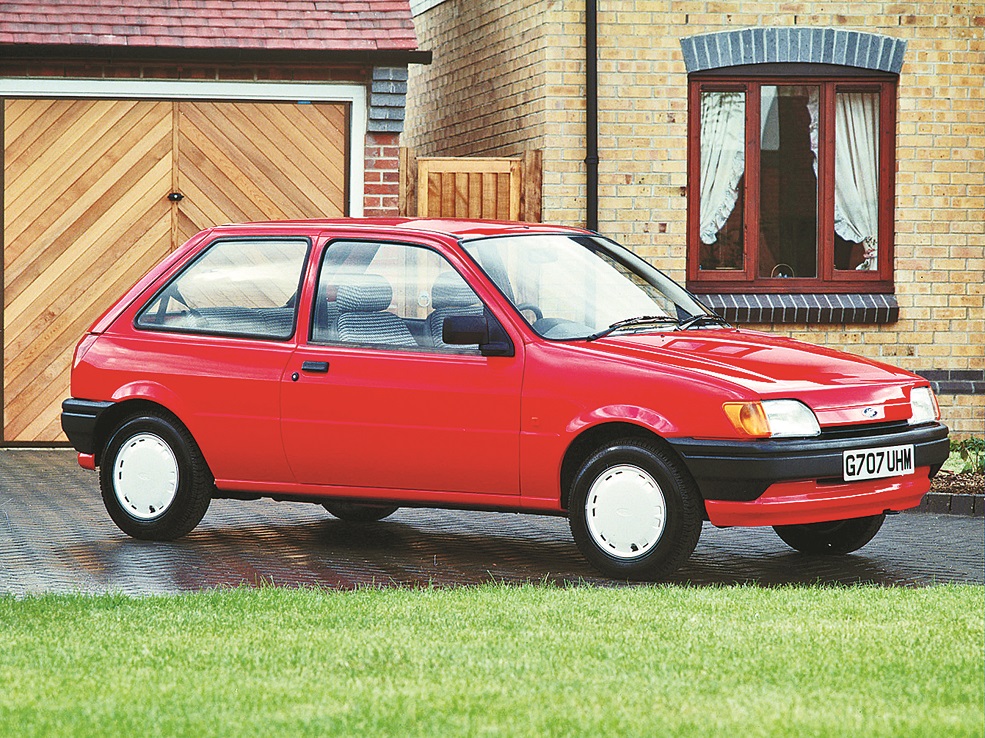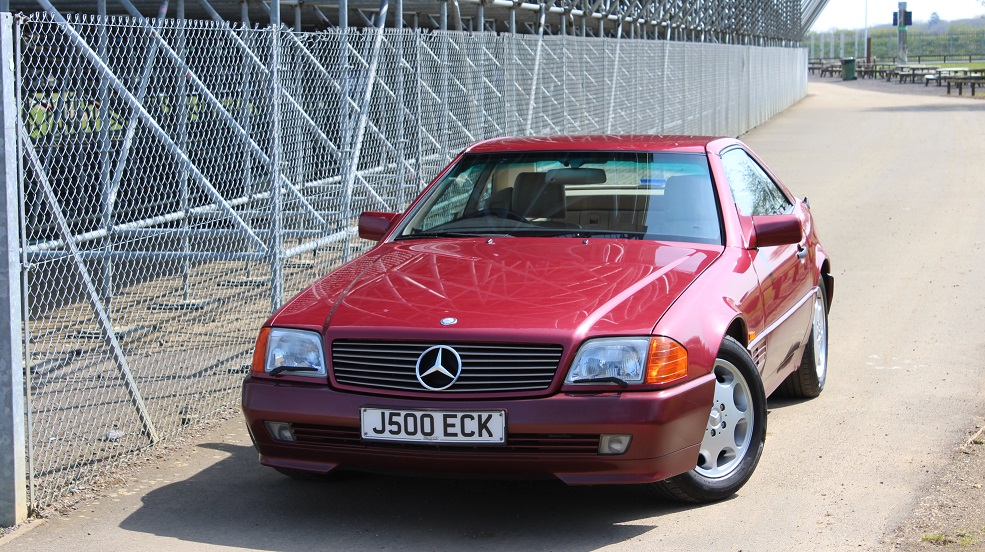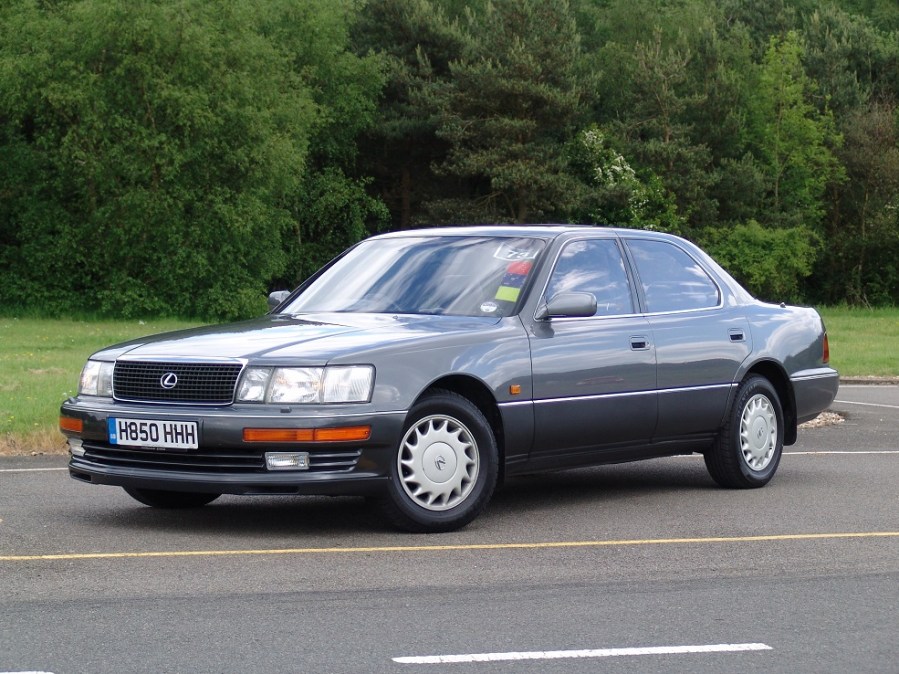1989 was a good year for new car launches. Here are some of the ones we think will be worth watching.
Lexus LS400 (1989-2000)
The Lexus LS400 was the result of several years of dedicated work to make the best car in the world – and out S-classed the S-class. Contrary to popular opinion the brand was not named as a contraction of Luxury EXport US. American brand management company Lippincott and Margulies was hired to create a brand name. Having narrowed down 219 names to Vectre, Verone, Chaparel, Calibre and Alexis, it was decided that Alexis was the best option. The metamorphosis to Lexus came amid fears that Alexis was seen more as a name for people than items, in the light of Dynasty character Alexis Carrington. By dropping the A and changing the second vowel, Lexus had been born.
America’s best selling luxury car brand for 15 of its first 17 years, Lexus also did reasonably well in the UK – and the LS400 now attracts a cult following among enthusiasts of modern classic executive cars and Japanese car fans alike.
LS400 values have rapidly increased over the last four or five years, with good examples now fetching almost four times what they did for 2014. But while this rise has been notable, it’s unlikely that we will see the trend repeat itself over the next few years as the LS has largely kept pace with equivalent luxobarges. While we predict arise in values, we expect it to be at a relaxed rate compared to previous growth.

BMW 8-series (1989-1999)
The BMW 850 nonplussed a lot of motoring writers when it was launched. Because where they were expecting a 6-series replacement, the 850 in truth took the big two door GT even further upmarket – no longer was it a real rival to the Jaguar XJS, it met the upper echelons of SL ownership head on.
While later models with V8 propulsion brought the model back into the realms of the affordable, the 8-series maintained a mystique over and above that of the Jaguar XJS and Mercedes SL simply by dint of its rarity. The subsequent launch of the blisteringly quick V12 850CSi only added to this mystique – an M car in all but name, its price new unfortunately deterred many owners from purchase. This button laden ode to Eighties excess felt like an anachronism in the caring sharing 1990s – but it’s that period quality that makes it such a great modern classic today.
8-series values are doing unusual things – the 850 is the best value, given that many are put off by the cost to run them. 840s are the most sensible, but the most valuable performance model is the bahnstorming 850CSi. £15,000-£20,000 will buy a nice 840 or very nice 850, while double that will get you a good CSi

Ford Fiesta MK3 (1989-1995)
The first fiesta to feature five doors, the MK3 was launched during the period where the prevailing attitude at Ford was “More of the same, please!” While it was nothing especially special, the improvements in fit and finish over the MK2 were welcome, as was the increased space all round and the softer, more aerodynamic style. And with five doors to rival the Metro, the Fiesta could hold its own as a real compact family car.
With engines ranging from a humble 1.1 through to the blistering RS Turbo, there was and still is a classic Fiesta for everyone. Arguably the best rare early model for collectors would be the 1.6S – with white wheel trims and an improved specification, it offered near-XR2i levels of fun with far more discretion and cheaper insurance premiums.
Many of those who had Fiestas as first cars are now looking to buy the performance models they lusted after in their youth, and this is certainly driving values north today. XR2 and RS Turbo values are pushing figures north of £5000 on average, over 100% improvement in the last five years, but it’s important to note that the average Popular Plus will be significantly cheaper and that the Ford performance “tax” is especially strong with this generation of Fiesta.

Mercedes R129 SL (1989-2001)
As a replacement for the long in the tooth R107 SL, the R129 was perfect. Clean and crisp styling hid a chassis related to that in the W124 E-class, with a range of six and eight cylinder engines suited to all budget – well, all budgets if you had the means for an SL in the first place! Top of the tree was the mighty V12 600SL, using the engine intended for the then new W140 S-class. Lower down the pecking order came 3.0 and 5.0 variants, supplanted later in life by a new V8 of 4.2 and 5 litres, straight sixes of 2.8 and 3.2 litres, and eventually identically sized V6s to replace those.
From 1992 to 1997 the R129 was one of the models affected by Mercedes’ infamous biodegrading wiring loom issue, meaning that cars from this period need to be carefully examined if bought for investment purposes. A new loom can cost in excess of £1000.
The last five years have been good to the R129, with average values increasing by 50% and corresponding increases in the averages at the top and bottom of the marketplace too. This means that the R129 seems to be a safe investment – and given that in the same time frame R107 values have rocketed we can predict with confidence that an R129 would be a clever buy right now.




